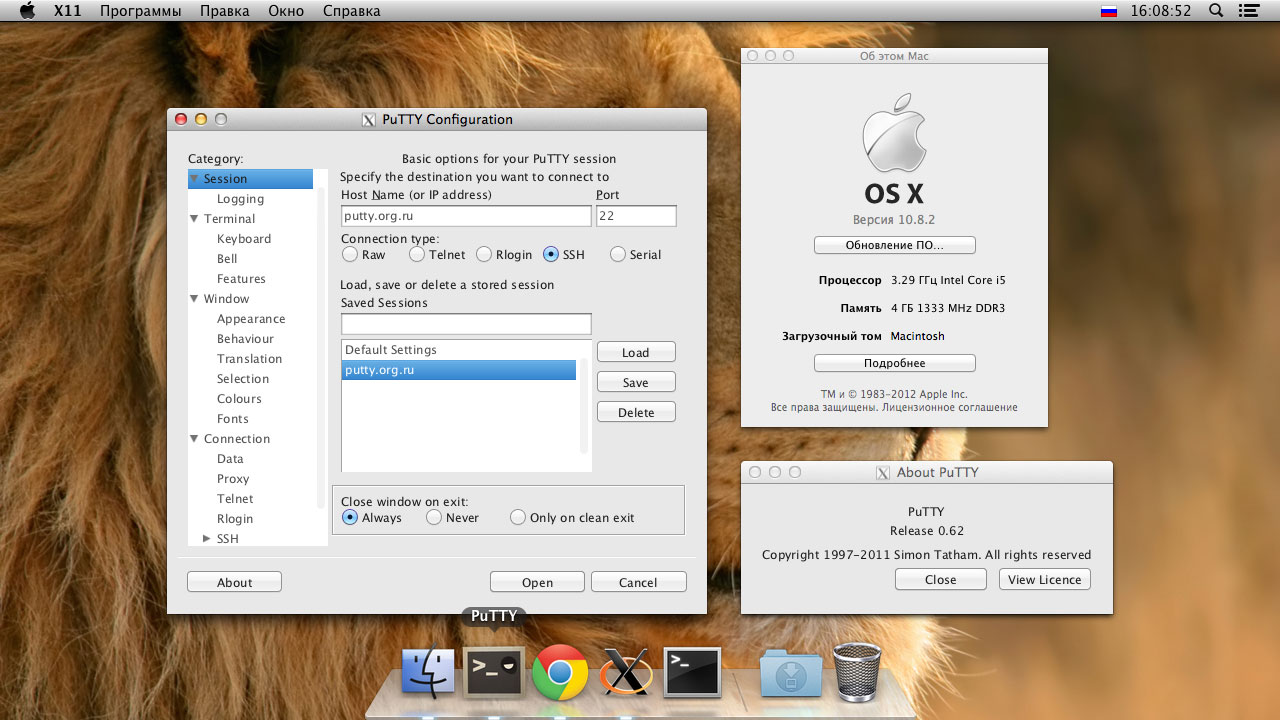


Bracketed Paste Mode is supported (makes it possible to program a text editor (Vim, emacs, etc.) to turn off auto-indent when pasting text from the Terminal into the text editor, even if the text editor is running on a remote ssh connection).Īnyway, if you have questions about Terminal or iTerm2, ask and I'll try to answer your question.If you want to use sftp or scp, these are standard commands that come with macOS and are accessible via Terminal.It gives you control over the SSH encryption key, and it uses its own format of key files. It was originally made for Windows, but it also runs on Mac and Linux machines. It allows you to use remote machines, and it is free and open source. You can reconnect to your collection of remote system by just launching Terminal. PuTTY is a client program for SSH, and it allows you to run a remote secure session over a network. You can create window groups so that when you launch Terminal, all the windows open, and any ssh connections associated with the profile for a window will be executed.Custom window sizes can be on a per profile basis.Font selection and size can be on a per profile basis.Various Copy & Paste tricks, all of which work seamlessly as Terminal is a native macOS app.There are actually 7 different ways you can bookmark ssh connection for Terminal (some of them are rather strange, but they work).And the ssh connections can be very complex, including X11 tunneling, generic tunnels, Jump Hosts, running commands on the remote node, starting tmux or GNU screen sessions as you login, etc.

Profiles can store ssh connection information.If you want a terminal emulator, then I strongly recommend macOS Terminal or iTerm2. If you interest in PuTTY is for a GUI based sftp or scp utility, then look at CyberDuck What is it about PuTTY that you think is lacking in macOS Terminal?


 0 kommentar(er)
0 kommentar(er)
